A Multi-Scale Grasp Detector Based on Fully Matching Model
Xinheng Yuan,Hao Yu,Houlin Zhang,Li Zheng,Erbao Dongand Heng’an Wu
School of Engineering Science,University of Science and Technology of China,Hefei,230027,China
ABSTRACT Robotic grasping is an essential problem at both the household and industrial levels,and unstructured objects have always been difficult for grippers.Parallel-plate grippers and algorithms,focusing on partial information of objects,are one of the widely used approaches.However,most works predict single-size grasp rectangles for fixed cameras and gripper sizes.In this paper,a multi-scale grasp detector is proposed to predict grasp rectangles with different sizes on RGB-D or RGB images in real-time for hand-eye cameras and various parallel-plate grippers.The detector extracts feature maps of multiple scales and conducts predictions on each scale independently.To guarantee independence between scales and efficiency,fully matching model and background classifier are applied in the network.Based on analysis of the Cornell Grasp Dataset,the fully matching model can match all labeled grasp rectangles.Furthermore,background classification,along with angle classification and box regression,functions as hard negative mining and background predictor.The detector is trained and tested on the augmented dataset,which includes images of 320×320 pixels and grasp rectangles ranging from 20 to more than 320 pixels.It performs up to 98.87%accuracy on image-wise dataset and 97.83%on object-wise split dataset at a speed of more than 22 frames per second.In addition,the detector,which is trained on a single-object dataset,can predict grasps on multiple objects.
KEYWORDS Grasp detection;deep convolutional neural network;anchor box;parallel-plate gripper
1 Introduction
Robotic grasping is becoming more challenging nowadays,as robots are indispensable in both industrial and domestic environments.High-precision robotic manipulation[1]and various grippers,such as vacuum and soft grippers [2–5],make demands for efficient grasp strategies.Traditionally,grasp detection consists of object localization,pose estimation and grasp estimation [6].Object localization aims at finding locations of target objects in the given data.In this part,object detection[7–17],object segmentation[18,19]and object localization without classification[20–24]are the widely used approaches.The 6D pose estimation is to reconstruct objects in a camera coordinate system[25–28].Given reliable object models,grasp estimation is carried out.Analytical methods are firstly proposed to evaluate the ability of the applied grasp to resist external disturbance,which is defined as force closure[29,30].Meanwhile,combining humanlike robotic hands and analytical methods,stable and precise grasps are conducted in both simulated and real-world problems[31].Some of other studies focus on grasp positions and styles[32]directly.However,the approaches above cost time and require models of high quality.It puts forward requirements for quick detection and easy application.
Utilizing convolutional neural networks and various datasets,empirical approaches take fewer stages and less time to generate the final grasp detection.Criteria and labeled data are abstracted from previous studies and used for training.For novel objects or those without the entire information,some of the methods generate candidate grasps with contact points based on point clouds[33,34].In other cases where complete 3D models are provided,approaches learn grasp gestures or positions that are applied on the whole object [35,36].Although grasp detection for multi-fingered robotic hands is reliable in most conditions,it relies heavily on the completeness of the model and is still not fast enough.Considering that rigid objects are the main targets in most cases,specialized algorithms are designed for vacuum and parallel-plate grippers to perform real-time grasp.Mahler et al.[2,3]trained a Grasp Quality Convolutional Neural Network on Dex-Net 3.0,which is a dataset containing 2.8 million pieces of point clouds and labels for suction grippers.Jiang et al.[37] proposed an efficient five-dimensional representation method for parallel-plate grippers,laying the foundation for the proceeding works.With grasps expressed as {x,y,w,h,θ},grasp detection is transformed to a 2D planar problem,where object detection approaches have superior performance.Among all these approaches,some works[38–44]utilized two-stage networks while others[45–51]employed onestage networks.In traditional object detecting tasks,two-stage approaches tend to perform better accuracy,especially on small targets,while one-stage methods make predictions faster.Adapted object detectors inherit the above characteristics but perform differently in different conditions.However,these approaches only predict grasp rectangles of similar sizes and are unable to balance speed and accuracy on targets of different sizes.Furthermore,grippers of various sizes,hand-eye cameras [52]and closed-loop control [53] still highlight the importance of an efficient multi-scale approach for grasp detection for real-time grasping.
In this paper,a one-stage multi-scale grasp detector is proposed.This network utilizes several feature maps of different scales to independently predict grasps,according to SSD [7] and FPN [8].Top-down pathways are added between multi-scale features to improve the performance of highresolution features.Improvements also include an efficient fully matching model designed for boxes from different scales based on analysis of the Cornell Grasp Dataset[44].Anchor boxes in every single layer are arranged as oriented anchor boxes[47]with different directions and ground truth(GT)boxes are replaced by cover boxes,which guarantees that matching scores are consistent with the similarity of center position and size between every two boxes.A background predictor is designed along with grasp classification and box regression[45].This mechanism separates the possible grasp region from grasp prediction and also prevents the network from considering labels emanating from other scales as negative examples in training as well.Contributions are summarized as follows:
• A multi-scale object detector is applied in grasp detection,consisting of multiple feature maps and effective connections between layers.
• An efficient fully matching model based on dataset analysis is proposed to ensure a high-quality combination between anchor boxes and labels from all scales.
• A branch of the background classifier functions as hard negative mining and enhances the generalization ability of the network.
In the following parts,Section 2 presents researches related to grasp detection,convolutional neural networks and anchor boxes.The proposed matching model and multi-scale grasp detector are presented in Sections 3 and 4,respectively.The evaluation metric and experiment details are given in Section 5.In Sections 6 and 7,results are analyzed and conclusions are drawn.
2 Related Works
2.1 Object and Grasp Detections
Neural networks have been used in many fields,such as medicine[54–56]and material analysis[57].Object detection is one of the widely studied issues,which predicts classification and bounding boxes on input data.Recent researches about grasp detections are based on two main approaches of object detectors,two-and one-stage detectors [58].The training process of two-stage detectors generates predictions from coarse to fine.RCNN[9]proposed the first two-stage style,which extracted object proposals by selective search,put resized feature maps into a CNN network and used linear SVMs for final predictions.To reuse feature maps,SPPNet[10]introduced a Spatial Pyramid Pooling layer,which did feature computation only once.Fast RCNN[11]replaced SVM training with neural networks and realized training end-to-end after selective search.Faster RCNN[12]abandoned the time-consuming selective search and introduced Region Proposal Network (RPN),which firstly trained a two-stage object detector end-to-end.One-stage object detectors make predictions only in one step.YOLO[13] employed a new strategy to evenly divide feature maps and make predictions on each grid simultaneously,which achieved an unprecedentedly fast speed.SSD [7] used a feature pyramid and made predictions independently on each different feature map,significantly improving the accuracy of one-stage methods to detect small targets.FPN[8]and RetinaNet[15]were proposed to improve the accuracy for multi-scale object detection of both two-and one-stage detectors.Most of the works that followed,applied object detectors for their tasks.Zheng et al.[59]applied FPN for parking space detection on street.Ma et al.[60] adapted Faster RCNN to detect pavement cracks.Different from previous works,DiTNet[61]used 3D point clouds to directly track ID to objects.
Similar to object detection and its applications,studies on grasp detection using neural networks began with a two-stage detector.Lenz et al.[44]proposed a model consisting of two neural networks for grasp proposals and scores respectively,which was the first two-stage detector to be realized completely using a neural network.Shortly after that invention,Redmon et al.[45]presented a direct regression grasp model,which was the first one-stage detector even before YOLO.The following approaches include two-stage methods[40–43]and one-stage methods[47–51].Two-stage networks were usually adapted based on specific grasp strategies.Chu et al.[40]adapted RPN for grasp candidate proposals.Dong et al.[41]segmented mask area and then generated grasp predictions.Wang et al.[42]used RGB data for grasp proposals and merged point cloud data for final proposals.Furthermore,most models in previous studies used pre-trained feature extractors.
2.2 Anchor Box
Anchor boxes are pre-defined boxes that help precisely predict bounding boxes in object detection.Early researches[43–46]used direct regression,which directly generates coordinates of predicted boxes from fully connected layers.Ren et al.[12]proposed sliding windows and anchors for region proposal network in Faster RCNN.A sliding window went over all grid cells of feature maps and anchor boxes of 3 scales and 3 aspect ratios were centered at the sliding window.Intersection-over-union(IoU)was the used metric for matching between anchor and GT boxes,shown as Eq.(1).

Anchor boxes with IoU higher than the threshold were labeled as positive examples.Giving scores and parameterized coordinates to anchors,region proposals were generated by transforming predefined anchor boxes.This approach mapped relative positions of features to those of real images and used a box regression method to train parameterized coordinates.SSD[7]designed anchor boxes of linearly increasing sizes for increasing scales while YOLO9000[14]used k-means to generate anchor boxes based on datasets.Different from object detection,grasp detection considers angles and aspect ratios of GT boxes,which largely affect the average IoU during matching.Guo et al.[38]divided 180°into 18 classes and applied anchor boxes of 3 scales at each feature map grid.Zhou et al.[47] took a different strategy using oriented anchor boxes of several directions and adding angle prediction to box regression.As angle regression provided more precise angle prediction,fewer angle categories were required.Therefore,oriented anchor boxes are used in the following works[39,49,50].
3 Fully Matching Model
The five-dimensional representation uses {x,y,w,h,θ} to present a grasp rectangle,shown in Fig.1a.On a 2D plane,xandystand for the center position,wandhare the weight and height,andθmeans the difference between the horizontal line and the orientation of the grasp rectangle.Although it turns grasp detection into a 2D planar problem,the extra dimension of angle remains an obstacle to improving matching quality.A novel anchor box model for fully matching is proposed by analyzing the Cornell Grasp Dataset,transforming anchor and GT boxes,and analytically generating anchor sizes and positions.

Figure 1:(a)A grasp rectangle.(b)Grouped anchor boxes.(c)Matching between a cover box and an anchor box
3.1 Dataset Analysis
Like most studies conducted previously,Cornell Grasp Dataset,which consists of 885 images from 240 objects,is used in this research.Each object has several images containing RGB and point cloud information.For each image,multiple positive grasp rectangles are labeled and few negative grasps are given as well.Here only positive ones are included in the training.
In object detection tasks,a bounding box represents the smallest box that covers the whole object.Since bounding boxes are represented as {x_min,y_min,x_max,y_max},a slender object is often covered by a wider box because of the angle of the object to the horizontal.Different from bounding boxes,a grasp rectangle expresses how to place a robotic hand and information of a larger area is required for computation.Furthermore,grasp rectangles are normally of large aspect ratios when large grippers are used on very long objects or small grippers on thick objects.Fig.2 shows the characteristics of the two sets of data.The scatter plot uses the area as x-axis and aspect ratio as y-axis in a logarithmic coordinate system.The blue points stand for bounding boxes that cover grasp rectangles while the red points represent the origin grasp rectangle.Bounding boxes have smaller aspect ratios compared with origin grasp rectangles.Two types of boxes have aspect ratios with geometric mean of 1.35 and 1.71,which shows the importance of grasp rectangles of large aspect ratios.
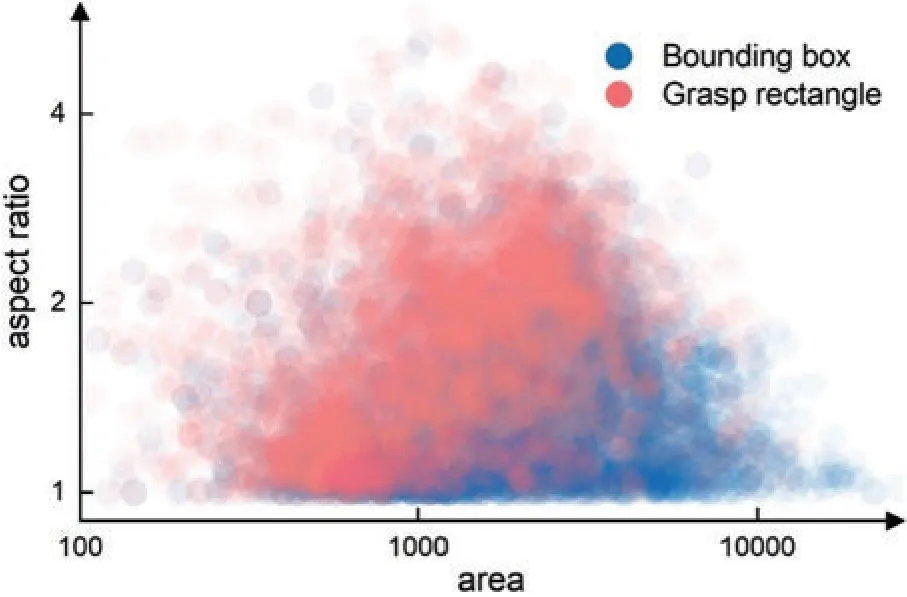
Figure 2:Aspect ratio-area scatter plot of bounding boxes and grasp rectangles
3.2 Box Transformation
In previous works,anchor boxes with multiple aspect ratios and areas are used to match GT boxes with similar shapes.Inspired by this idea,transformation is made on both anchor and GT boxes.In this work,square anchor boxes with directions,named oriented anchor boxes [47],and cover boxes are used for matching.
3.2.1 Anchor Box
Traditional methods provideNAS×NSanchor boxes at each feature map grid,whereNASandNSare numbers of aspect ratios and scales,respectively.In grasp detection tasks,they divide 180°intoNclassparts andNclassstands for the number of angle classes.Along with 4 regression parameters and 2 values for graspable scores,Nclass+6 values are used for the prediction of each anchor box andNAS×NSpredictions are made at each feature map grid.However,the above approaches bring two main drawbacks.When multiple anchor boxes,that come from theNAS×NSones at the same feature grid,generate predictions with similar angles,only the most probable one is kept through Non-Maximum Suppression,which decreases efficiency of anchor boxes.Furthermore,if grasp results in one direction are better than the others,several anchor boxes tend to make similar predictions and thus the diversity of predicting results is harmed,especially on symmetrical objects.Therefore,anchor boxes with the same size at the same grid point are set as a group and are forced to predict different angles.Moreover,combining anchor boxes with directions,angle regression is used by adding one more parameter in box regression,that regresses the angle of an anchor box to that of the corresponding GT box.An anchor box(xa,ya,la,la,θa)is used to present a GT box(x,y,w,h,θ)with the following regression parameters given in Eq.(2).

where Δθ=180°/Nclassis the unit angle andβis the scaling factor that keepstθin the same scale as the other four parameters.Given the angle class numberNclass,5 regression parameters and 2 graspable scores,NAS×NS×Nclasspredictions are made and 7 values are required at each feature map grid.By dividing angles and improving prediction accuracy,fewer parameters are required for a single prediction and more predictions are made.Different from most networks adapted before,the multiscale detector makes predictions independently on feature maps of different scales,and the numbers of anchor boxes at each scale should be reduced to maintain the total number of predictions.Inspired by oriented anchor boxes [47],only aspect ratio of 1:1 is applied and thusNASis set 1.One group of anchor boxes is shown in Fig.1b,where thick lines stand for the size and position of all anchor boxes in the group and thin lines give an example of one orientation.The black dot is the center of the grouped anchor boxes and the corresponding feature map grid is covered by the shadow area.
3.2.2 Cover Box
Although square anchor boxes reduce the parameters needed,they lower the average IoU of GT boxes with a large aspect ratio,which results in failure to match part of GT boxes.In this work,cover boxes are proposed to replace GT boxes during the matching process.The cover box is the smallest square that can cover the GT box.The center of the cover box is the same as the GT box while the length of the side of the cover box is equal to the length of the long side of the GT box.Cover boxes pay attention to the center position and the maximum one-dimensional length of GT boxes,which is different from traditional methods where aspect ratio and size are focused on.Combining cover boxes with oriented anchor boxes,the average IoU of matching is highly improved.In Fig.3,IoU with anchor boxes rotating around fixed GT boxes are discussed in each part.The size of anchor and GT boxes is set to 1 and the center distance is 0.2.Each graph contains three GT boxes and one anchor box.The thick lines stand for GT and anchor boxes while the colored thin lines indicate IoU values in polar coordinates.GT boxes are set with sizes of 1 and aspect ratios of{1:1,2:1,1:3}while anchor boxes are of different shapes in every situation.The filled shadow areas indicate regions of intersection between GT and anchor boxes,and the pure shadow areas reveal the range of the variation of IoU.The baseline of 0.5,as is the threshold used in many previous works,is marked in black thin line.Every anchor box is drawn at an angle of 60° and the joint points with colored curves show the current IoU.As shown in Figs.3a–3c,widely used anchor boxes with multiple aspect ratios of {2:1,3:1,1:1}perform well in selecting bounding boxes of similar shapes.Long anchor and GT boxes achieve IoU high above 0.5 only when they are both of similar orientations and aspect ratios,and thus GT and anchor boxes correspond one to one by aspect ratio and size.GT and anchor boxes with an aspect ratio of 1:1 get IoU above 0.5 and are more stable than others for the case of angles changing.Fig.3c also shows the variance of IoU where only anchor boxes with aspect ratio of 1:1 are used.The IoU reduces as the aspect ratio increases.Nevertheless,the GT box with an aspect ratio of 1:3 gets IoU lower than the baseline regardless of relative positions,which exposes the major defect that square anchor boxes fail to match long GT boxes.To solve this problem,a different strategy is applied that anchor boxes are matched to the closest GT boxes with similar one-dimensional maximum lengths.Cover boxes are introduced by enlarging the short side length of GT boxes to the long side length,shown in Fig.1c.The cover boxes and anchor box with aspect ratio of 1:1 are presented in Fig.3d.The IoU curves are strongly correlated with the length of the long side and have little changes with angles.Fig.1c also presents an example that the IoU of a cover box is larger compared with the GT box,when the GT and anchor boxes have a similar one-dimensional maximum length and center position.

Figure 3:IoU between three GT boxes and four anchor boxes
3.3 Anchor Box Distribution
With cover boxes replacing GT boxes,anchor and GT boxes are both square boxes.Sizes of anchor boxes become computable because IoUs are only depended on relative positions and sizes,and a unified standard can be achieved.To ensure high-quality matching,the minimum IoU between GT boxes and any anchor boxes of each scale is calculated,and the maximum value among them is supposed to be above the baseline.In other words,cover boxes of any size and aspect ratio should have at least one anchor box of IoU larger than the threshold.As anchor boxes are evenly distributed at the centers of feature map grids,the minimum value appears in the middle of the four neighboring anchor boxes,as shown in Fig.4a.Dotted lines represent how feature maps are divided and anchor box1 stands for anchor boxes of the corresponding scale.Anchor box2 represents anchor boxes from the next upper scale,and its density is only a quarter of the former.Point1 and point2 mark minimum points on each scale respectively.With the position indicated,the minimum IoU in each scale can be expressed by a fixed Eq.(3).

wherelaiandlbare the side lengths of anchor boxes from theithscale and the GT box,respectively,andxistands for the offset of anchor boxes in theithfeature map,as shown in Fig.4b.
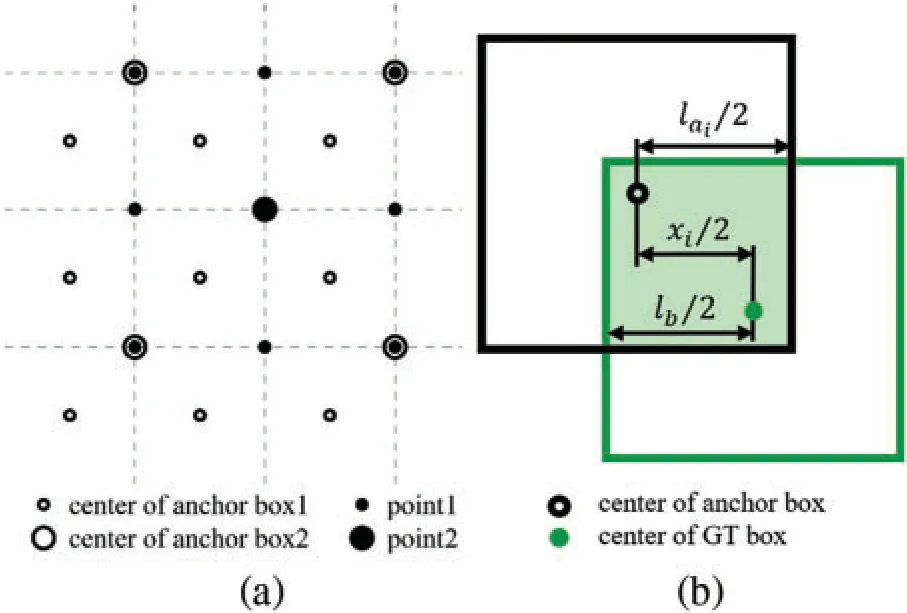
Figure 4:(a)Center positions of GT boxes that get the minimum IoUs with multi-scale anchor boxes.(b)The minimum IoU of the GT box and the anchor box of the ith scale
Furthermore,exponentially increasing anchor sizes are adopted in this work.Given images of 320 × 320 pixels,feature maps have sizes of {40 × 40,20 × 20,10 × 10,5 × 5,3 × 3},and anchor box offsets of {8 × 8,16 × 16,32 × 32,64 × 64,106 × 106} pixels are generated,which will be explained in the following part.Compared with linearly increasing anchor sizes used in previous works,exponentially increasing anchor sizes perform better when dealing with GT boxes of widely ranging sizes.Meanwhile,the detector uses anchor boxes of two sizes at each grid point to make up for the relatively low IoU between scales and to increase the probability of matching.The set of anchor box sizes can be expressed aswhererandαstand for the increasing factors in between scales and throughout all scales respectively,andArepresents the side length of the anchor.
4 Network Architecture
As GT boxes from all scales can get matched anchor boxes,a multi-scale multi-grasp detector is proposed.The detector is made up of a backbone and three predictors,as shown in Fig.5.

Figure 5:Network architecture
4.1 Backbone
The backbone uses truncated Resnet-50[62]as the basic extractor.ResNet-50 consists of 4 blocks and the first three blocks are reserved,and the three blocks have 3,4 and 6 building blocks respectively.Each building block includes a shortcut as the residual layer and a group of 3 Conv layers.The 3×3-S2 Conv layer of the first branch of shortcut in block 3 is replaced by a 3×3-S1 Conv layer.These three blocks take an image of 320×320 pixels as input and then produce an output of a 40×40 feature map.They are followed by a group of additional layers to further extract the feature maps.An additional layer is made up of 1×1-S1 and 3×3-S2 Conv layers.The extractor takes an RGB-D or RGB image of 320×320 as input and output feature maps as{40×40,20×20,10×10,5×5,3×3}which are denoted as {P1,P2,P3,P4,P5}.To introduce feature pyramid networks [8],top-down connections are added between adjacent feature maps without changing the input and output sizes of the extractors.Every feature map goes through a 1×1-S1 Conv layer respectively to unify output channels,producingfeature maps.Before merging,C′5and C′4pass through 3×3-S1 Conv layers as C5and C4.Starting from C4and C′3,the higher feature map is upsampled by a 2×2 upsampling layer and merged to the lower one by a concatenating layer,and C3is obtained via a 3×3-S1 Conv layer on the merged feature maps of C4and C′3.After repeating this procedure and reusing the higher-resolution features,a group of new feature maps of{C1,C2,C3,C4,C5}is generated for separate predictions.
4.2 Predictor and Loss Function
Apart from the grasp classifier and the box regressor applied in many studies,a novel branch of the background classifier is added in this network.The three predictors are constructed according to subnetworks[15].In this work,each predictor has three 3×3-S1 Conv layers as middle layers and a convolutional predict layer.
The background classifier acts as a criterion on whether to take a group of anchor boxes into the computation and uses a background thresholdTb.In the background classifier,anchor boxes are trained in groups as mentioned in Section 2.2,and the maximum IoU of all anchor boxes in the group is regarded as the corresponding background score.Groups with scores less thanTbare considered as backgrounds and negative examples in the background classifier.Meanwhile,groups with scores higher thanTbare positive examples.As background labelsfor theithgroup is set to 1 and 0 for positive and negative examples respectively,the loss function for the background classifier is written as Eq.(4).

whereNis the total number of anchor box groups,bistands for the predicted background score of theithgroup,andγis the focusing parameter according to the focal loss[15].
The grasp classifier is used to predict grasp probability for each single anchor box.Furthermore,only anchor boxes in groups,that are considered positive in the background classifier,are used in the training process.The anchor boxes grouped as backgrounds are ignored,which is different from previous studies.Most works [14,15] regarded positive and negative examples as objects and backgrounds,and ignore data in the middle,which decreases accuracy once trained.However,the proposed fully matching model can encode all positive grasp examples and draw a clear line between the positive and negative examples.Therefore,the grasp classifier is aimed at focusing more on predicting angles than on distinguishing graspable region from backgrounds.With a grasp thresholdTg,thejthanchor box in theithgroup is labeled by,andis set to 1 if the corresponding IoU is higher thanTgand otherwise 0.The loss function for the grasp classifier is given as Eq.(5).

whereNpos_1is the number of positive examples in the background classifier,Nclassis the number of angle classes mentioned in Section 3.2.1 andgijstands for the predicted grasp score.Grasp scoresgijare generated by the sigmoid function and thus are independent of each other,which allows multiple grasp predictions at the same feature map grid.
The box regressor predict grasp rectangles based on pre-defined anchor boxes,and only positive grasp examples are trained in this part.CIoU[16]and SMOOTHL1[11]are applied to regress the offsets for rectangles(x,y,w,h)and anglesθrespectively.Since CIoU loss uses dimensionless parameters to describe the similarity between predicted boxes and target boxes,it can be directly expressed by regression parameterswithout anchor boxes.The loss function for the box regressor is shown as Eq.(6).

whereNpos_2is the number of positive grasp examples that score higher thanTg.
The total loss is written as Eq.(7).

whereλ1andλ2are the weights for the background classifier and the box regressor.
5 Experiment
5.1 Dataset
To exhibit the ability of the multi-scale grasp detector,Cornell Grasp Dataset is divided in two approaches:
• Image-wise splitImages are randomly divided into training and validating set.This treatment tests the ability of the model to predict grasps on known objects.
• Object-wise splitImages of the same object are divided into the same set,which represents the generalization ability of the model to predict grasps on novel objects.
5-Fold Cross-Validation is used in this work.At each time the dataset is randomly divided into 5 sets by different split approaches.RGB and RGB-D images are applied in training and predicting.When depth information is needed,RGB and depth images are concatenated together as 4-layer RGBD data.Since 885 images in the dataset are far from enough for training deep neural networks,data augmentation methods are applied on raw images,including up-down and left-right flipping,random scaling and Gaussian noise.Finally,augmented images are randomly cropped to 320×320 pixels containing at least one grasp rectangle.Side lengths of grasp rectangles after augmentation vary from 20 pixels to 400 pixels,which completely covers image size.The test sets consist of images with objects fixed at the center.
5.2 Evaluation Metric
A widely accepted metric is adopted in this model,which consists of angle matching and overlapping:
• The angle between orientations of the predicted and GT grasp boxes is no greater than 30°.
• The Jaccard index of the predicted and GT grasp boxes is greater than 0.25.
The Jaccard index is expressed as Eq.(8).

wheregandare the predicted and GT grasp boxes,respectively.Predicted grasp boxes that meet the requirements are regarded as successful grasps.
5.3 Implementation Details
The model is constructed in Tensorflow and computations are run on a NVIDIA RTX2080ti graphics card.The optimizer used in this work is Adam with weight decay,referred to as AdamW.The learning rate is set to 0.0001 and weight decay is set differently depending on input data and models.Learning rate decreases with increasing epochs.The model starts with random initialization requiring no pre-training and is trained end-to-end.
6 Results
6.1 Fully Matching Model
The angle class numberNclassgrouped at each grid point is set to be 6.TakingA1=28,r=1.414 andα=2,a set of anchor sizes of{(28,40),(56,79),(112,224),(224,317),(373,527)}pixels is generated.With multi-scale anchor boxes,the minimum IoU of an arbitrary cover box with a certain side length and anchor boxes from each scale are computed using Eq.(3),as shown in Fig.6.Lines of dark and light colors represent small and large anchor boxes at the same grid point respectively.The two types of anchor boxes complement each other,and thus the envelope curve stays high above the baseline of 0.5 throughout the range of (20,600),indicating that for any GT box,anchor boxes are matching it perfectly from at least one scale.Furthermore,replacing GT boxes with cover boxes for matching improves the average IoU,as shown in Table 1.Origin grasp rectangles get an average IoU of 0.5988,which surpasses 0.58 mentioned in the previous work[50].Also,the usage of cover boxes guarantees that all grasp rectangles receive matched anchor boxes with IoU threshold of 0.5 and the average IoU achieves 0.7522.
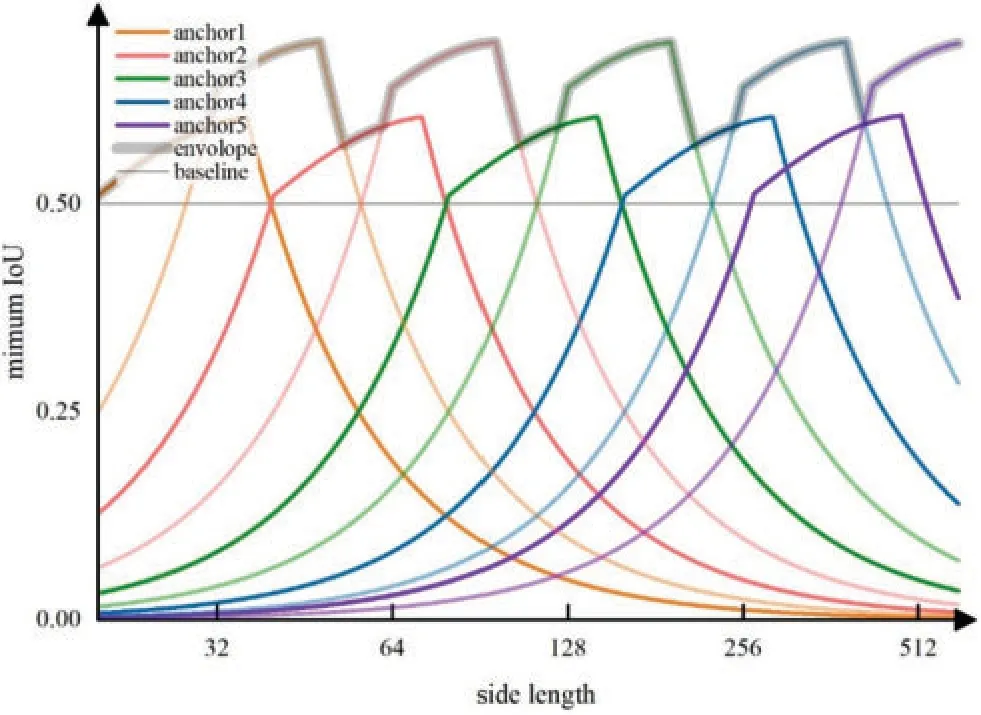
Figure 6:Minimum IoU of multi-scale anchor boxes and a GT box with certain side length

Table 1:IoU of all anchor and GT boxes
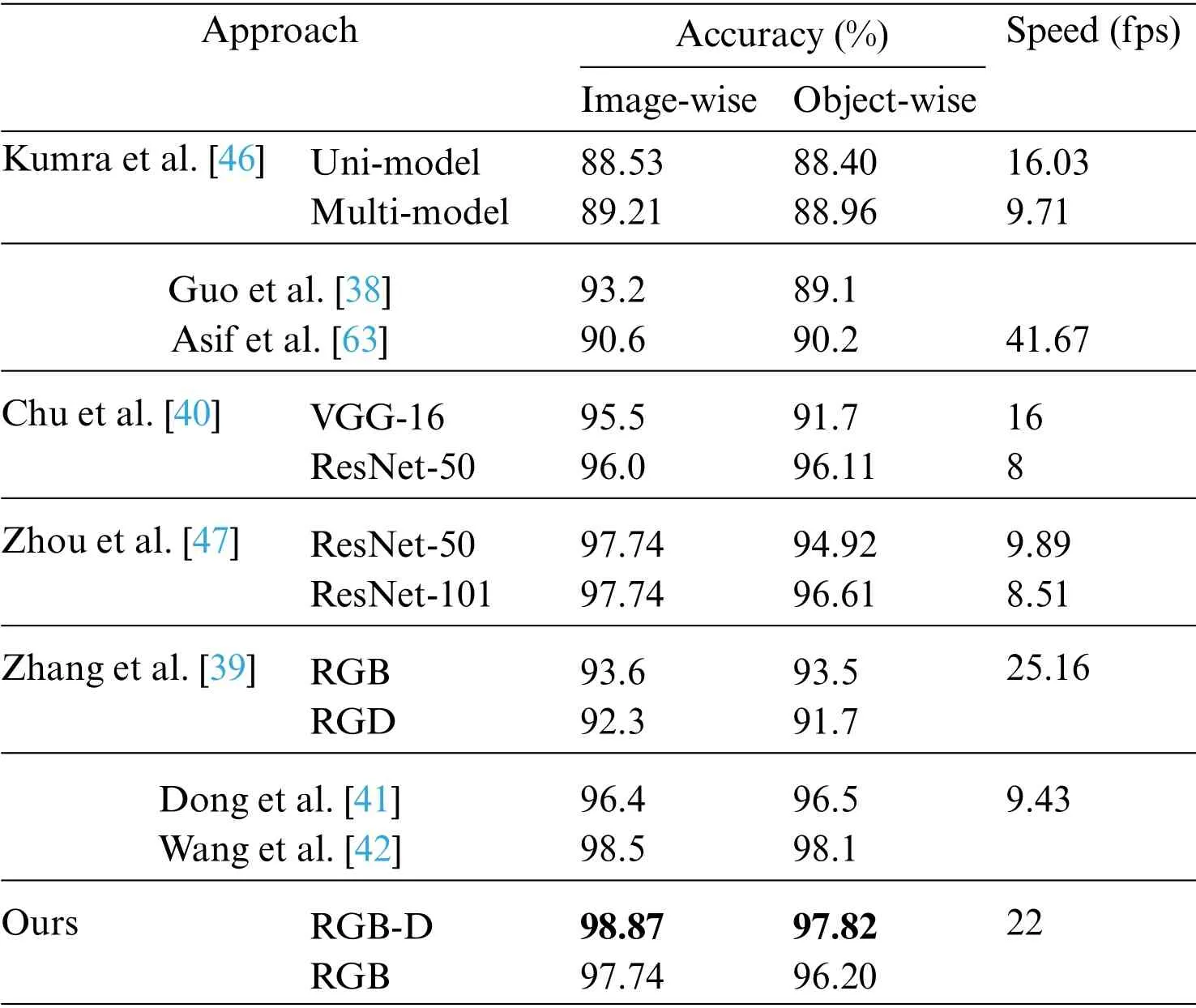
Table 2:Single-grasp evaluation on cornell grasp dataset
6.2 Single Grasp
Single-grasp method,which generates a grasp with the highest score among all candidates as the final proposal,is used in this part.For each image in the test set,the predicted grasp is judged whether to be successful by the evaluation metric mentioned above and therefore the accuracy is generated after going through the test set.In Fig.7,rows(a)and(c)show the best predictions and GT boxes,respectively.With RGB-D images,the proposed model achieves an average accuracy of 96.27% and 95.45%on the image-and object-wise split datasets respectively.In addition,the detector achieves up to 98.87%and 97.82%on each dataset.With RGB images,the detector performs with an average accuracy of 94.12%and 93.38%on two types of datasets and gets the maximum accuracy of 97.74%and 96.20%,respectively.Table 2 shows results in this work compared with previous studies and the proposed multiscale grasp detector performs competitive accuracy on randomly scaled objects.Tables 3 and 4 present the variance of the best accuracy depending on angle and IoU threshold.As the angle threshold decreases to 15° and the IoU threshold increases to 0.35,the accuracy remains high,which proves an efficient fully matching model.Although most of the predictions are successful,some grasps do not match GT boxes,shown in Fig.8.In Fig.8,columns(a)and(b)show grasps from other scales,which scores higher than the origin one,and column (c) shows grasps,that are semantically wrong.The wrong grasps indicate that the detector prefers grasps on long thin structures and edges on objects,which is acceptable because it can be screened by giving a specific gripper size.Fed images of batch size 1,the model outputs grasp predictions at more than 22 frames per second,including time of processing results using OpenCV library.The fast detecting speed can support real-time grasp.
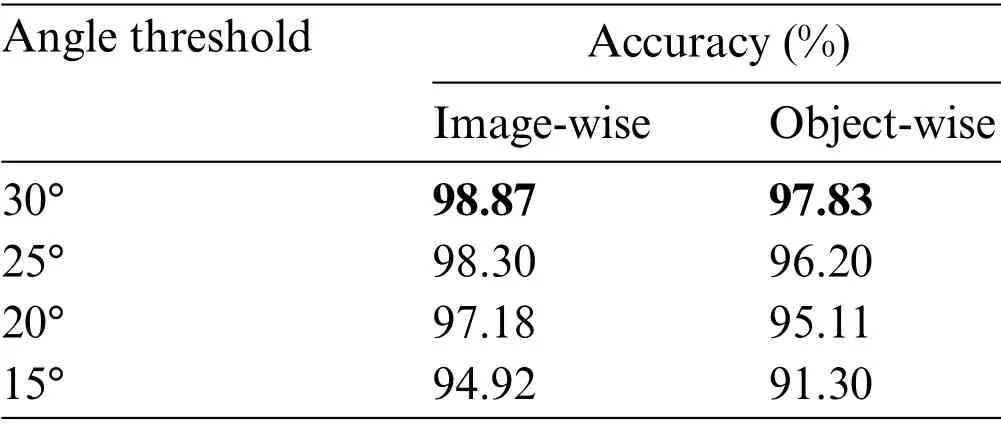
Table 3:Accuracy with IoU threshold of 0.25 and different angle thresholds
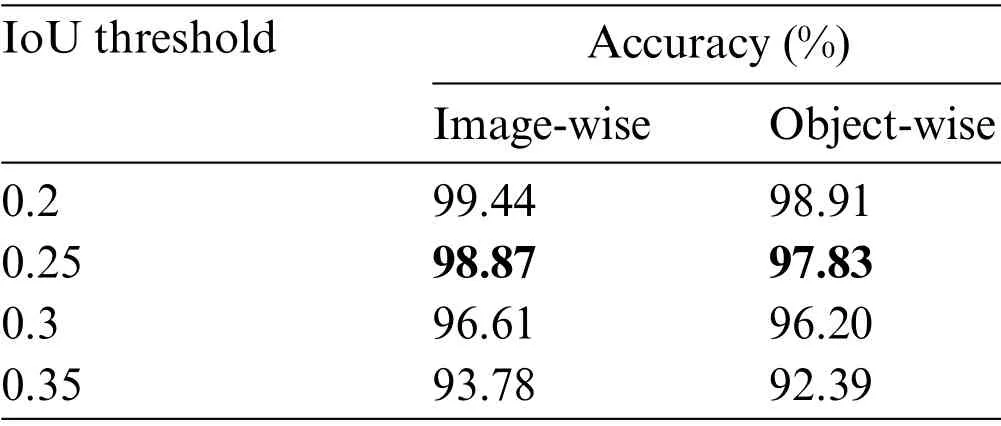
Table 4:Accuracy with angle threshold of 30°and different IoU thresholds
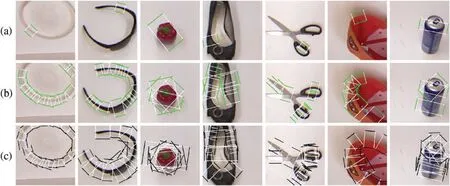
Figure 7:Examples of single grasp and multi-scale grasp prediction

Figure 8:Unsuccessful grasp predictions
6.3 Multiple Grasps
The multi-scale grasp detector performs grasps with changing object sizes.To exhibit predicted grasp rectangles of different sizes,a newly designed test is based on multi-grasp research,where grasps of topnscores are collected and few candidates are reserved by Non-Maximum Suppression that merges several similar predicted boxes.As shown in Fig.7b,the detector makes predictions containing both large and small grasp candidates at the same time,which come from anchor boxes either of single scale or of multiple scales.Furthermore,predictions from different scales are presented separately.Images of the same object with different sizes are put into the network,and predictions from five scales are listed together in the form of heat maps,shown in Fig.9.Column (a) stands for input images,columns (b)–(f) are heat maps of scores in five different scales,and the color bar,that marks color ranging from 0 to 1,is listed on the right side.As the size of objects becomes larger,the main areas of grasp features move to a larger scale and the highest score is performed on larger feature maps.Meanwhile,the same part of the object suggests different grasp sizes and types in different scales.The multi-scale detector prefers grasps across the small objects and applies grasps on a small part for large objects.Coupled grasp styles are conducted on objects of medium sizes.The changing results strongly prove that the proposed detector can predict multi-scale grasps.
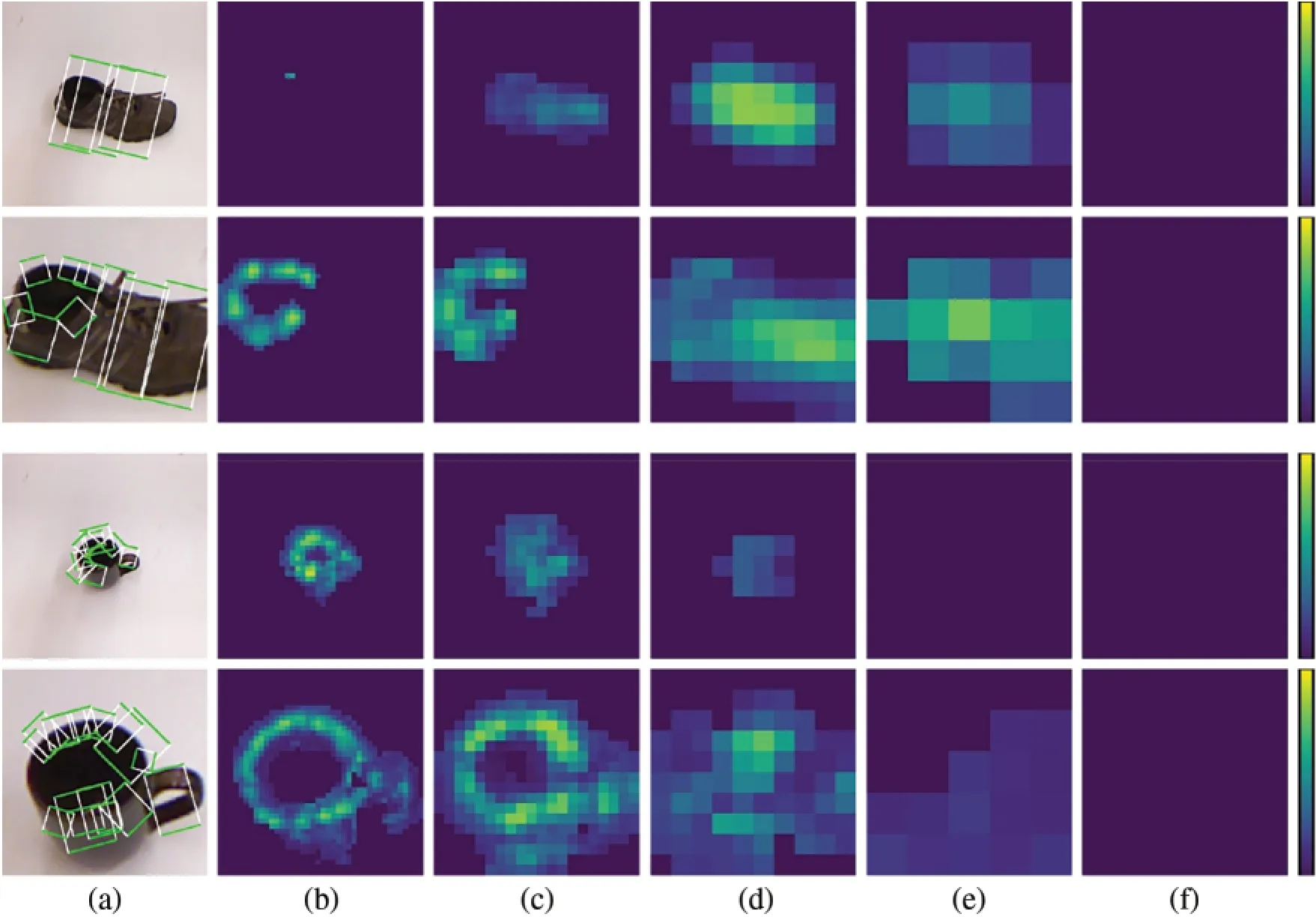
Figure 9:Heat maps of grasp scores on multiple feature maps
6.4 Ablation Study
The ablation study is designed to examine the effectiveness of the proposed approaches.A set of controlled experiments is carried out on both image-and object-wise split RGB-D datasets and two modules are considered in this part,as the background classifier and the FPN connections.One of the two modules is abandoned at each time and all results are compared to the origin model.As shown in Table 5,the model without the background classifier performs with an average accuracy of 94.35%and 94.24%on the image-and object-wise datasets respectively and achieves an accuracy of up to 96.61%and 95.11%.The missing background branch brings a loss of nearly 2%accuracy on the image-wise split dataset and 1.2%on the object-wise split dataset.In addition,the lack of a background classifier makes positive predictions less separated from negative ones.Fig.10 shows the output of heat maps by the controlled model after the same training epochs.Compared with those in Fig.9,scores on feature maps of each scale show smaller differences between the maximum and minimum values,which proves the weakened ability of the model.Meanwhile,the detector without FPN connections achieves the average accuracy of 94.94%and 94.83%on two types of datasets and has the maximum accuracy of 98.30%and 96.34%,respectively.Compared with the background classifier,the FPN module leads to a smaller accuracy loss.

Table 5:Ablation study on background classifier and FPN connections
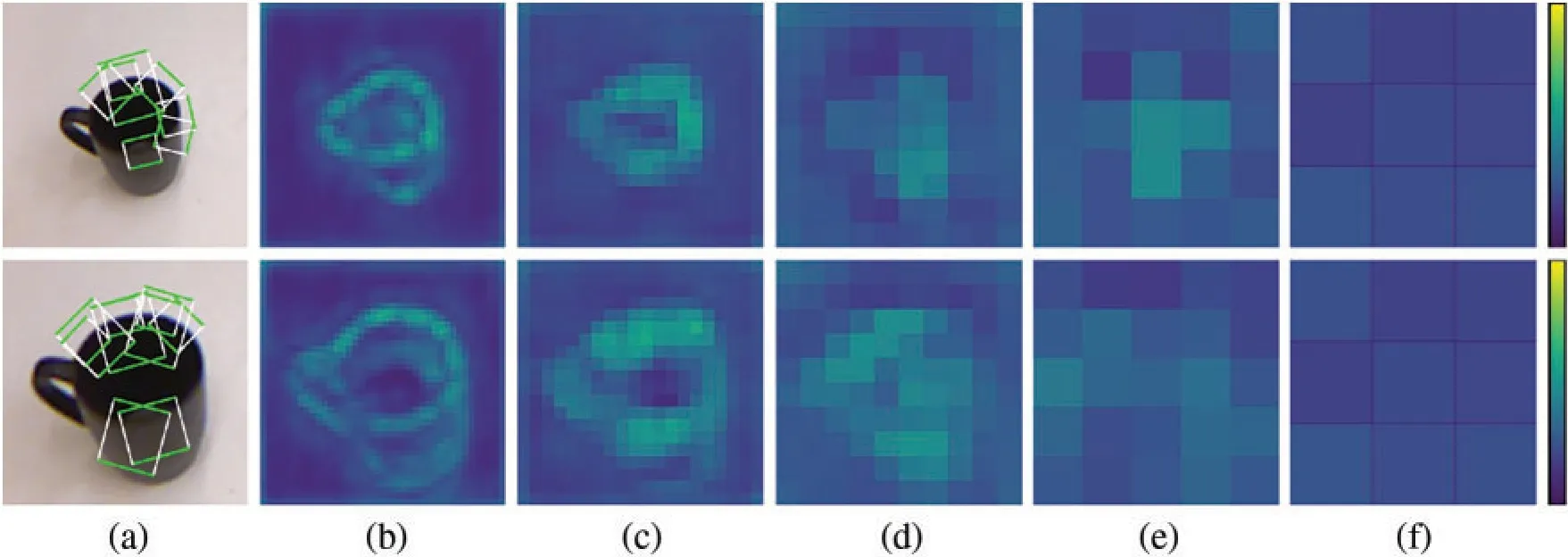
Figure 10:Heat maps of grasp scores of the controlled model
6.5 Grasp Detection on Novel Objects
The multi-scale detector is tested on novel objects in two approaches.The dataset used in this part is collected by an RGB-D camera placed on top of a robotic arm.The first test uses images captured during rotation and translation of the camera around objects,shown in Fig.11.The proposed detector can make predictions dealing with the variance of the orientation and distance.Moreover,each image in the second group of images consists of multiple objects,shown in Fig.12.Multiple grasps are performed on all objects contained in images.Both of the tests verify the generalization ability to grasp according to partial information.Furthermore,the detector predicts grasp rectangles with multiple sizes depending on the size of grasp features in one stage.The multiple grasp predictions given in Figs.11 and 12 provide various options for different gripper sizes and orders of grasping rectangles.By combining the specific size and object to grasp,the best grasp prediction can be chosen from the multiple candidates.Therefore,single grasp tasks are not carried out on novel objects because the lack of relative semantic information.

Figure 11:Multi-grasp on single objects from different relative positions

Figure 12:Multi-grasp on multiple objects
7 Conclusion
A multi-scale grasp detector is proposed using a fully matching model and multiple feature maps.It can predict multiple grasps of different scales through a single shot.With cover boxes replacing GT boxes in matching,the average IoU is highly increased and all positive examples are encoded through anchor boxes.The background classifier prevents large amounts of unwanted easy negative examples and focuses angle predictor on positive and hard negative examples,which brings better performance on grasp angle predicting and enhances the generalization ability especially on multiple scales.This model achieves an accuracy of up to 98.87%and 97.82%on the image-and object-wise split datasets at a real-time speed of 22 frames per second,which is competitive among the most advanced studies.Furthermore,the experiments on novel objects present the effectiveness of the proposed detector.
Acknowledgement:This work is supported by the Central Program of Basic Science of the National Natural Science Foundation of China(72088101)and the National Postdoctoral Program for Innovative Talents(BX2021285).The numerical calculations have been done on the supercomputing system in the Supercomputing Center of University of Science and Technology of China.
Funding Statement:This work received fundings from Central Program of Basic Science of the National Natural Science Foundation of China (72088101) and the National Postdoctoral Program for Innovative Talents(BX2021285).
Conflicts of Interest:The authors declare that they have no conflicts of interest to report regarding the present study.
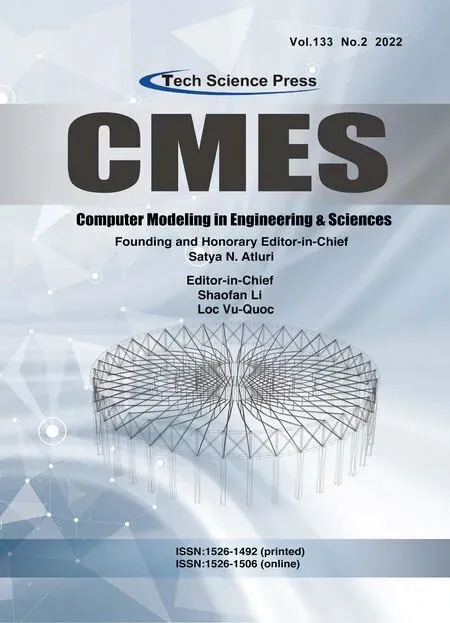 Computer Modeling In Engineering&Sciences2022年11期
Computer Modeling In Engineering&Sciences2022年11期
- Computer Modeling In Engineering&Sciences的其它文章
- Advances in Hyperspectral Image Classification Based on Convolutional Neural Networks:A Review
- A CFD-DEM-Wear Coupling Method for Stone Chip Resistance of Automotive Coatings with a Rigid Connection Particle Method for Non-Spherical Particles
- Numerical Study for Magnetohydrodynamic(MHD)Unsteady Maxwell Nanofluid Flow Impinging on Heated Stretching Sheet
- An Intelligent Cluster Verification Model Using WSN to Avoid Close Proximity and Control Outbreak of Pandemic in a Massive Crowd
- Hysteresis of Dam Slope Safety Factor under Water Level Fluctuations Based on the LEM Coupled with FEM Method
- Cotangent Similarity Measure of Consistent Neutrosophic Sets and Application to Multiple Attribute Decision-Making Problems in Neutrosophic Multi-Valued Setting
